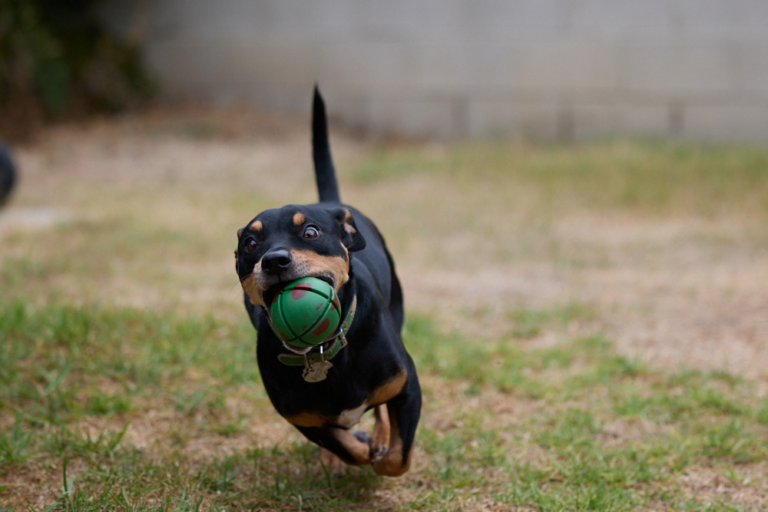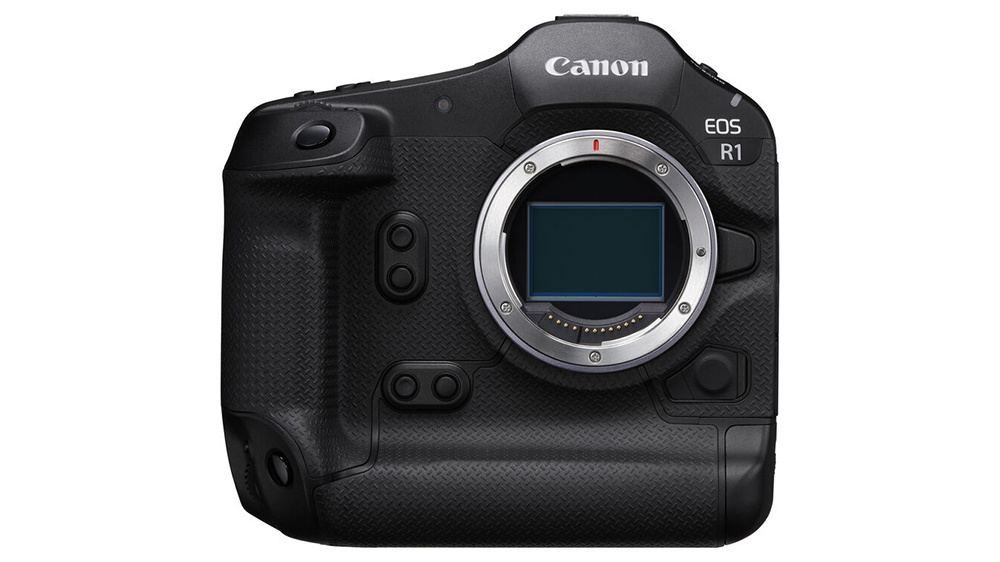I’ve gotten to spend some time getting to know Canon’s newest flagship camera, the Canon EOS R1. And I’ve got thoughts.
The term “flagship” is an interesting one. Taking its name from the ship chosen to lead a nautical mission, in terms of cameras, a “flagship” is usually the embodiment of the absolute best technology a company has to offer. In the DSLR days, “flagship” cameras were always really easy to tell apart from the rest of the line. Usually larger bodies. Often built-in battery grips. The best in weather sealing. The best autofocus. And the absolute best feature set available anywhere in the line. To get these features, users would pay a premium. But that premium was well worth it, as the features provided by a flagship camera were simply not available in any other form. But in the age of mirrorless, is that still the case? I’ll get back to that question in a moment. But first, let’s get to the particular flagship that you came here to read about.
The Canon EOS R1 is technically the first true mirrorless flagship in the line. The company has produced numerous mirrorless cameras in recent years. I owned the original R5 and now own an R5C. The company released an R3. I have not used that camera, but, according to those who have, it has a lot in common with the R1, either as a predecessor or as a viable alternative, depending on the user. As I said, I haven’t used that camera, so I will leave that discussion to you in the comments. I have also not yet used the R5 II. Interestingly enough, the first “flagship” camera I ever owned was the Nikon Z9. I’m not going to spend too much time comparing flagship to flagship in this article. Rather, I tell you all this because my experience will no doubt shape my opinion of the camera.
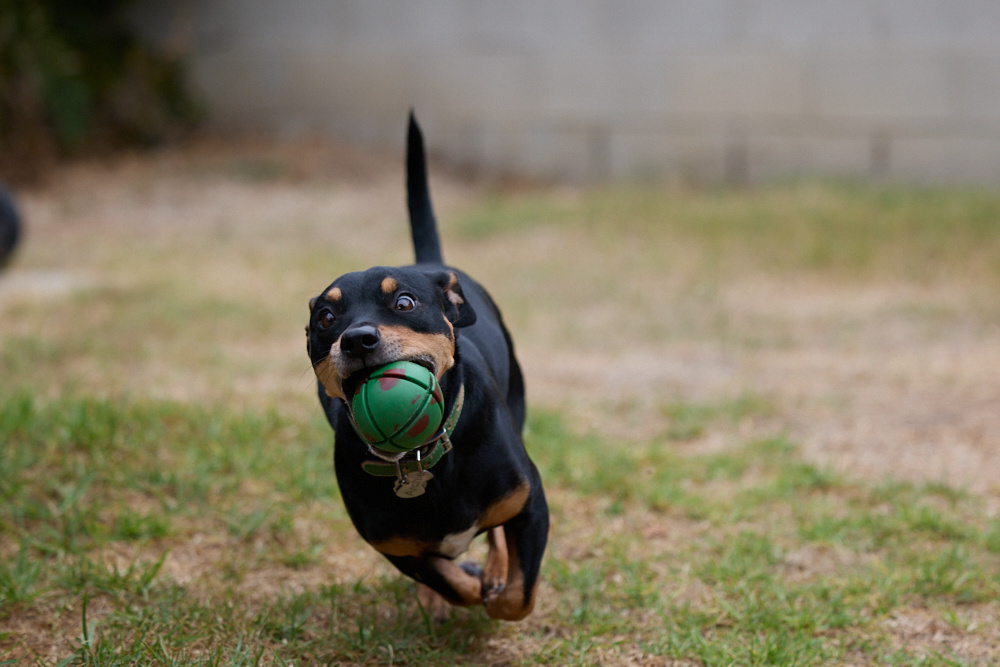
Autofocus
So, what was my experience? Well, right out of the box, one word immediately comes to mind: speed.
The R1 is blisteringly fast. That word applies to both the still photography burst speed of 40 fps in raw as well as the lightning-fast autofocus. It’s easily one of the best autofocus systems I’ve ever had the chance to use. Without making any adjustments aside from setting it to auto-detect subjects and scan the whole frame, the camera pretty much never missed a shot. Within ten minutes of opening the box, I had the camera out to track the most demanding of subjects: my dog Archbald (a.k.a. The Rocket), as he sprinted around the backyard as if training for the Olympics. Now, you don’t spend north of $6,000 to take pictures of your pet, so we’ll get to more prestigious subjects in a bit. But one thing I found most impressive in the base autofocus mode was how quickly it latched onto a subject. Even when the dog ran behind the garage and popped out from behind trash cans, the R1 was able to grab focus right away while the subject was already at top speed. In other words, the time between seeing something, raising the camera to your eye, and it being in focus is essentially non-existent. Predict this forward to needing to capture a running back breaking through a hole, and you can see why this camera’s autofocus is the first thing worth mentioning.
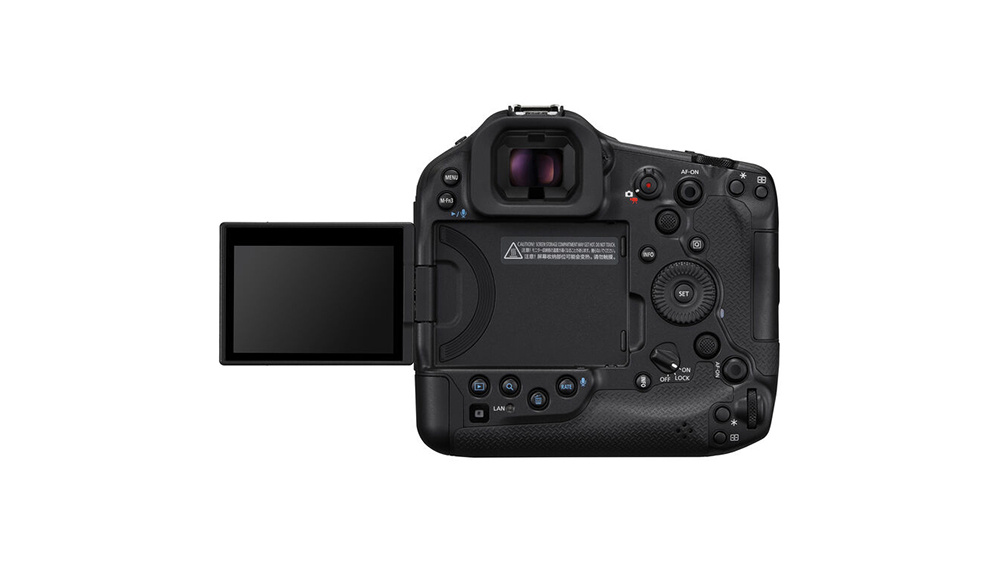
Add to this some unique features that the camera offers, and you have an autofocus system that really is ahead of the curve. For instance, assuming you are using this camera to shoot human sports and not just an energetic animal, the camera is the first I’ve seen that offers sport-specific detection modes. So, if your subjects are playing soccer, basketball, or volleyball, the camera already knows common movements of the sport. If shooting soccer, for example, you can throw the camera into that mode, follow the action, and the autofocus will automatically jump back and forth between what you likely want in focus based on common actions associated with soccer.
But they didn’t stop there. The camera also allows you to register specific faces. What does that mean? Well, let’s say the 1997 Chicago Bulls all came out of retirement and played a pickup game. You’ve got Michael, Scottie, Rodman, and Steve Kerr. Even Toni Kukoc is making an appearance. But let’s face it: we really just want a shot of MJ. So, you could essentially take a shot of Michael Jordan, register his face in the camera as your priority, and then track him around the court. Regardless of what happens in front of or behind him, the R1’s focus will now stick to Michael all game long (or until you disable it). Now, let’s say Michael goes out of the game for a rest or isn’t in that particular frame. You can register multiple faces and prioritize who is most important. So, if Mike’s not in the frame, it may start looking for Scottie, for example. This seems like the makings of an SNL sketch about teammates being jealous of whoever is higher on the R1’s priority list. But in practice, this is an incredibly helpful tool.
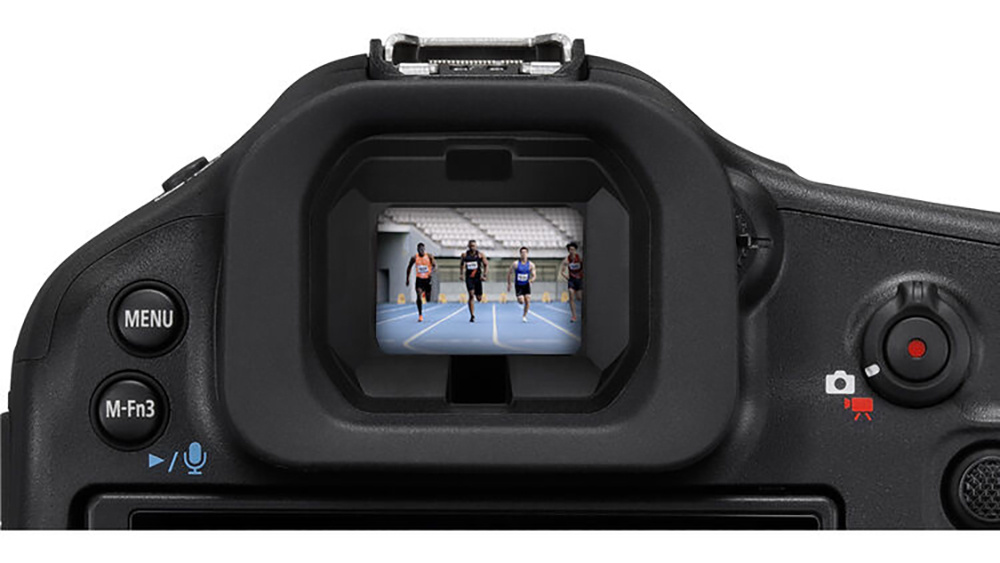
Okay, I’ve started with the camera’s key strength: its autofocus system. But let’s face it, there is one really big elephant sitting in the corner of the room that we simply have to discuss. In a market where the competitors’ flagships all have 45 MP plus, the R1 has a 24 MP sensor. It’s a fast sensor. It’s an amazing sensor. But math is math, and 24 is less than 45.
I’m of two minds about this. I mentioned earlier that the Nikon Z9 was the first “flagship” I ever owned. That’s not because I haven’t been a professional photographer for 20 years. That’s because the type of clients that I have tend to prioritize megapixels due to how the key art images I create for them will be printed large and cropped in multiple variations. I am not a photojournalist, so the majority of my work is for billboards, store displays, etc., as opposed to publication. In other words, they prioritize printing size options over speed. I mention that because the R1 isn’t really aimed at photographers like me. Instead, it is laser-focused on photojournalists, like sports photographers, and the highly demanding environments in which they work.
So, while the 24 MP sensor would be an issue for my own work, it is actually a positive for those this camera is aimed at. 24 MP is more than enough for publication and editorial purposes. And, while I am no engineer, it feels safe to say that many of the R1’s groundbreaking abilities in terms of speed are aided by the fact that it is not trying to do those magic tricks at a higher megapixel count. Far more important than megapixels is that hyper-speed 4,897-point autofocus system I discussed in the previous section. Far more important to a photojournalist is the fact that the camera is built like a tank. Awesome weather sealing allows this camera to be used game in and game out, regardless of whether that game is in Hawaii during the summer or Buffalo during the winter. The camera even upgrades its hot shoe port cover game to be more weather-resistant with a new contraption I’m hoping other brands start to copy. Features like the built-in Ethernet port allow photojournalists to quickly transfer files to their editors over a LAN connection at the speed of the news. And, in the case of photojournalists, the smaller file size also means faster transfer speeds.
The camera does offer another unique feature, which is AI upscaling in-camera. So, you do have the power to upscale your 24 MP images up to as high as 96 MP in-camera through the magic of artificial intelligence. This is actually better, in my opinion, than something like pixel shift because it doesn’t require a perfectly still camera and subject to function. The feature is, however, only available with JPGs. Yet, still, this is a realistic option for journalists who want to uprez right on the spot, then transfer the higher resolution images to their clients right from the field.
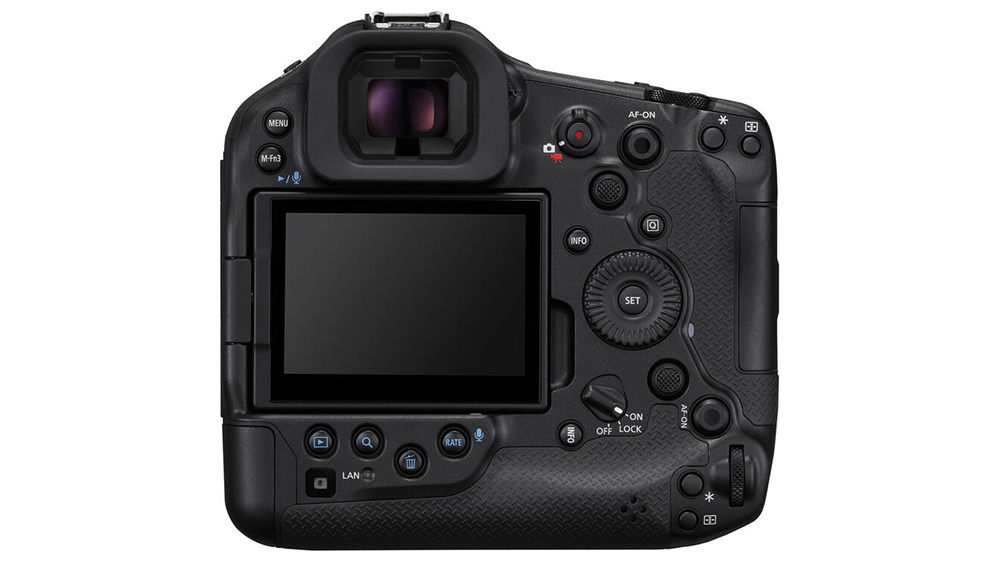
Features, Ergonomics, and Build Quality
I’ve already mentioned that the R1 is built tough. The tall body with the built-in grip is sturdy, and you won’t have to worry about it standing up to difficult environments. Interestingly enough, despite its size, the camera body itself feels surprisingly light. I didn’t take it apart—it is just a loaner unit I have, after all—but whatever is happening inside the body must not take up too much space because the camera feels super light in hand.
I was in the unusual position of having five different camera bodies to choose from during the time I had to review the R1 and found myself reaching for it on many occasions. Mostly because the R1 was the best combination of speed, stability, and weight for many of my purposes.
Like other Canon bodies, the R1 has a fully articulating LCD screen, which comes in handy if you need to get in front of the camera yourself. Opinions are divided between those who like a flippy screen and those who prefer their LCD to go straight back and stay in line with the lens. I kind of like owning one of each. When I’m working in earnest, I do prefer the LCD to be in line with the lens. But having it flip out to the side does offer benefits, especially when doing a lot of these camera tests. It’s just a matter of what works best for you. Actually, I really like the way Sony has been doing LCDs lately, where you have the option to either flip straight back or flip all the way around. I’m hoping the industry as a whole will adopt this model in the future.
One autofocus feature I didn’t mention is that the camera is capable of eye control autofocus. This is a really cool technology where, after you take a moment to calibrate the system, the EVF is able to track your eye to see where you are looking and shift autofocus accordingly. This takes some getting used to, and I did not have enough time to truly master it. But I did take the time to calibrate it and set it up. Honestly, I wasn’t expecting it to work. I don’t always have the best luck with cutting-edge tech. But the little tracking ball was spot-on with my eye, and it’s clear that this feature has the potential to give Canon a leg up on the competition.
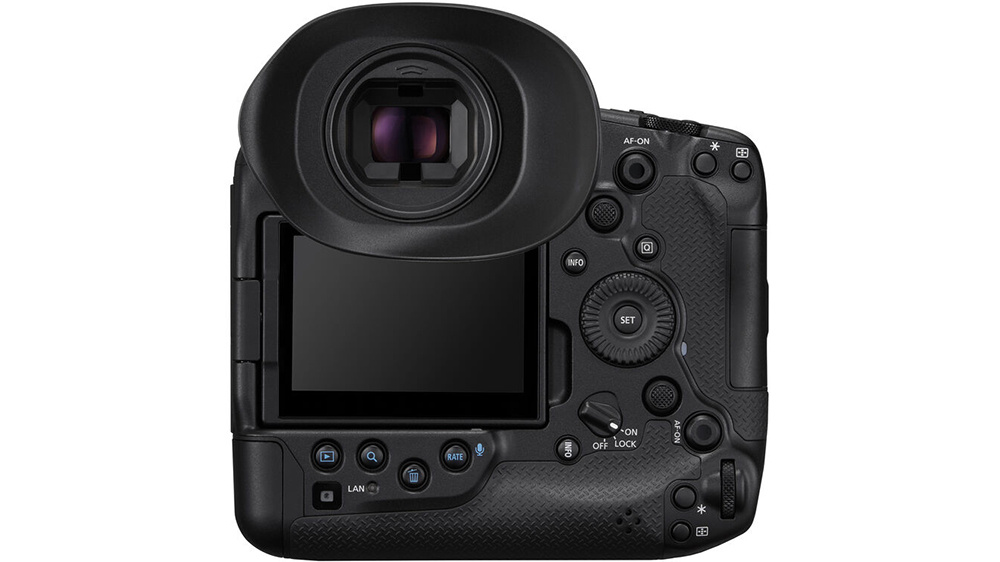
For me, however, the main benefit of having eye control is that I imagine it inspired the company to give the R1 such a massive EVF. The viewfinder has incredible detail with a 9.44-million-dot EVF, but I’m especially referring to the physical size of the eyepiece itself. On a practical level, it is simply one of the most comfortable EVFs I’ve ever looked through—especially since I wear glasses. Again, this is a little touch that is sure to be loved by photojournalists who have to spend an entire game with an eye pressed to their camera day after day. The EVF also has optional blackout-free shooting.
The camera has a stacked sensor and can be shot with either an electronic or mechanical shutter. When combined with an RF lens, the camera is capable of up to a whopping 8.5 stops of image stabilization.
I really like that the camera can flash sync up to 1/320th. That’s much better than the 1/200th you find on most mirrorless cameras. It can apparently go up to 1/400th if using a Canon-built flash (I could only test with third-party options). This could be a major benefit in the field for a variety of shooting scenarios.
As an owner of an R5C, I would like to personally thank Canon for finally putting a full-sized HDMI on the R1. If you aren’t a video shooter, you have no idea how big an improvement this is. If you, like me, have left a long trail of broken micro HDMI cables and ports in your wake, you’ll be sending Canon an extra-large cookie basket this holiday season.
I also like that Canon has the multifunction hot shoe, which allows for additional wireless add-ons that can help build out the camera, such as sound recording options, in addition to traditional flash. Of course, that’s getting into the realm of video. So, should we go there next? Sure, let’s do it.
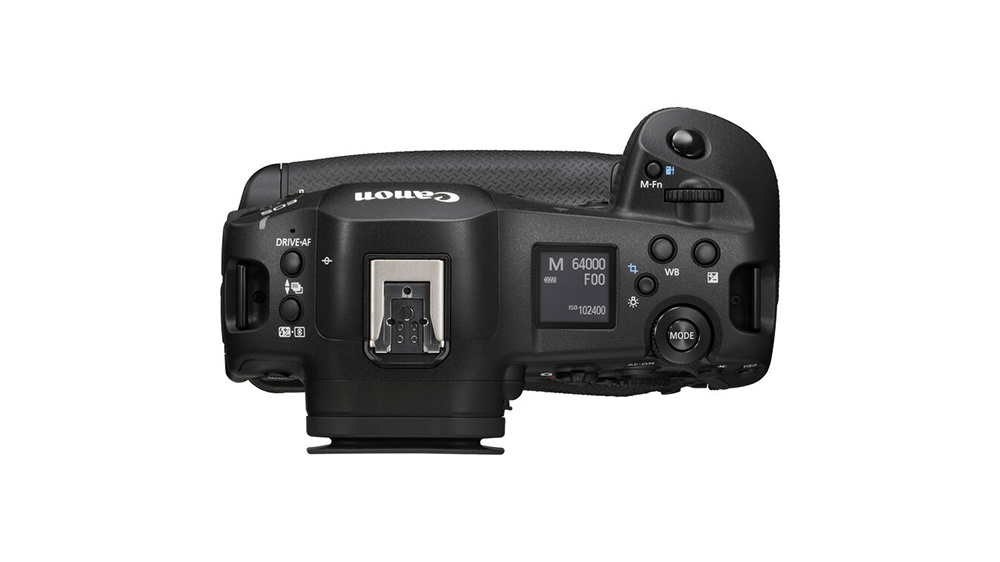
Video
The R1 is a really great B cam if you are using a Canon mirrorless system like the R5 II or R5C as an A cam. It could also be a great A cam. But Canon has thrown a few wrinkles in, which have me scratching my head. The good news is that those wrinkles are mostly very easily fixed with a firmware update. The additional good news is that there is still plenty here to be happy about.
Top on that list for most people will be that the R1 can record in 6K 60 fps in 12-bit Canon raw video as well as 10-bit XF-AVC S, XF-HEVC S, and MP4 up to 4:2:2. A very usable range for all different types of filmmakers. My favorite feature, aside from the full-sized HDMI, is that the R1 allows you to shoot with C-Log 2. If you don’t know, C-Log 2 is widely considered superior to C-Log 3. My R5C can shoot raw video that you can debayer as C-Log 2 in post. But the R1 allows you to shoot natively in C-Log 2 both in the raw format as well as the other formats. This offers massive upgrades for professional workflows.
Another of my favorite things—which is oddly the most frustrating—is that this camera offers false color! Yes!!! I love false color for checking exposure and have it mapped to a custom function button on my R5C so that I can toggle it on and off before every take. The R1 also allows you to toggle it on and off before every shot. There’s only one little oddity that I can’t seem to make sense of. You can’t use the false color if your R1 is set to View Assist. View Assist allows you to view your log recording as “normal” on the LCD screen with the technical LUT applied, giving you a more pleasing viewing experience and a better idea of what contrast will look like in your image. So, generally, I’m going to want that on all the time. But, for some reason, with the R1, you have to actively turn off View Assist before you can turn on false color. Then, once you’ve looked at the false color, you have to go back into the menu to turn View Assist back on. Then, for the next take, you have to repeat this four-step process (turn off View Assist, turn on false color, turn off false color, turn on View Assist). On the R5C, for instance, I can just live in View Assist and still toggle the false color on or off at will with a custom function button. But instead of it being one toggle, it’s an entire process with the R1. It may not seem like a big thing, but for a camera whose biggest asset is its speed of operation, this seems like an unnecessary slowdown to the process. I asked Canon about this, and hopefully, they can easily fix this in the next firmware update. For now, it’s probably one of my least favorite things about the camera.
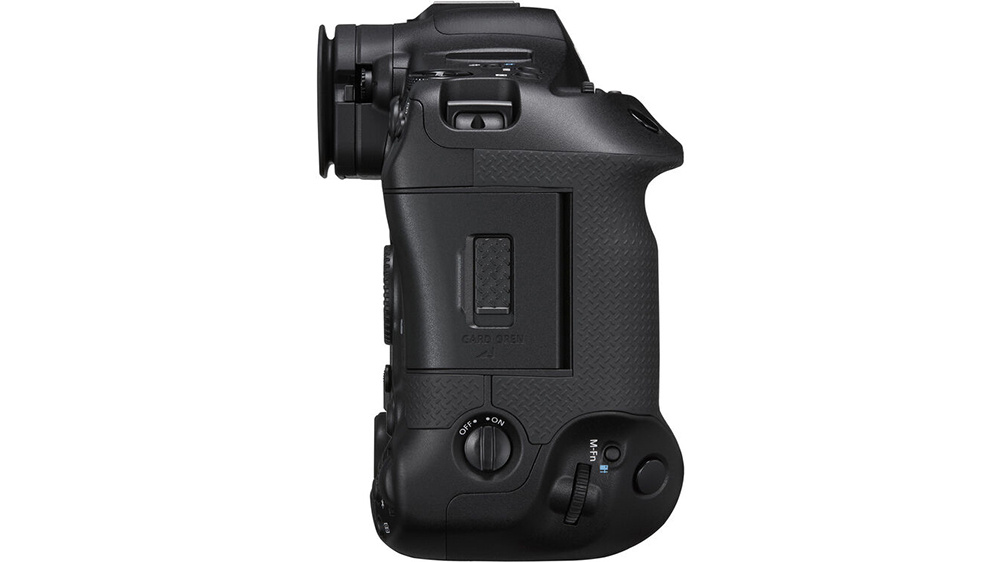
Also, adding to the list of things I’d love to see in the next version of the firmware is the option for a waveform. At the moment, the camera has a histogram, but no waveform option. I’m 100% sure that Canon can fix the waveform and False Color/View Assist issues in a firmware update, so these are hardly fatal flaws. In fact, the mere existence of false color at all puts the R1 ahead of many other flagships on the market. They are almost there—just give me that firmware 2.0.
Lest you think I’m down on the video options, that is not the case. In fact, I absolutely love the camera’s 6K implementation. I’m personally partial to 6K as a recording format. It doesn’t waste as much memory space as recording in 8K, yet still provides enough added resolution for finishing projects in 4K. With that said, it would be great to have some 4K and 2K options for shooting raw video at the full width of the sensor, or some 6K XF-AVC options. Instead, if you want to shoot 6K, you are limited to the raw video format. That’s not a big problem for me, as I prefer the raw video format, but it is something to be aware of. Or, if you prefer to shoot in XF-AVC S, you will be limited to 4K.
The camera also performs a nice little trick of being able to record audio even when shooting at high frame rates. Speaking of audio, the camera is able to record four tracks of 24-bit audio, which is a big step up for those needing solid in-camera audio for their projects. The camera also sports two CFexpress Type B slots for fast recording.
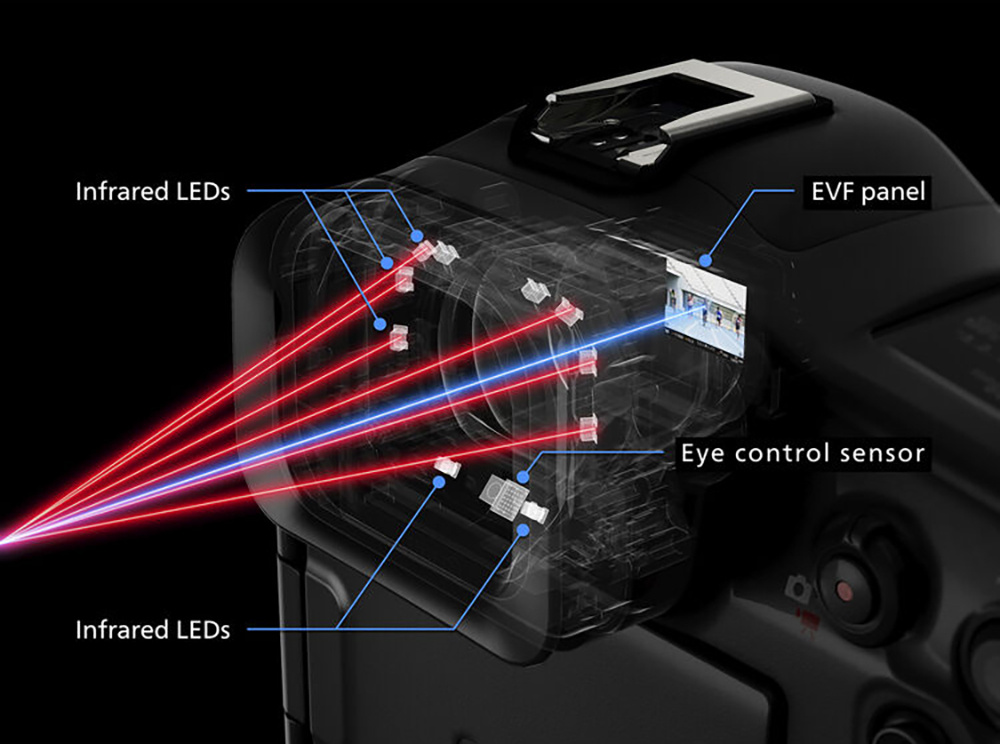
In both video and stills, it affords you a pre-record option so that you can be sure not to miss the critical moment in a scene. And users can also shoot both stills and motion simultaneously (with video limited to 1920×1080). This might come in handy for photojournalists pulling double duty in the field.
Unlike some competitors, the camera also allows you to utilize in camera LUTs. Again, if your workflow includes an overall show LUT that you want to preview beforehand (or bake in in the case of XAVC S files), this is a crucial option and a nice addition.
The camera offers a true 24fps workflow for video creation (as opposed to only 23.98). A big plus for users who will use this camera alongside more traditional cinema bodies. As far as I’ve been able to tell, there is no anamorphic desqueeze in camera as of yet. But, this too, could be added via firmware at a later date.
The only thing I wish was on the camera that can’t be fixed via firmware is that it is missing a timecode port. I won’t say “missing” because none of the other flagships on the market have one either. But, selfishly, I wish there was a timecode port where the manual flash sync port is. I know I’m spoiled, but I haven’t used a manual flash sync port for a very long time now whereas I use timecode every day. Then, again, this camera isn’t built for me alone. And, I’m sure there are many folks reading this article that do still physically tether to your flashes in the field. So, like I said, wishing for a timecode port on the R1 is simply me being selfish. I apologize.
How Does the Camera Actually Perform in the Field?
As I mentioned earlier, I am not a sports journalist. I’m not someone who shoots from the sidelines at NFL games or the Olympics, which I believe is exactly the target demographic for the EOS R1. But I do shoot athletes for a living, just under controlled environments. So, I brought in a friend of mine who used to run track and field and put the camera and its autofocus to the test with the fastest human in my Rolodex. So far, I’ve been rattling off a mountain of statistics about the camera, but none of those specs amount to a hill of beans if they don’t work in the field.
Right off the bat, I can tell you that, unsurprisingly, the camera can capture a beautiful image. Canon claims 16 stops of dynamic range, which would be more than the C500. As always, Canon has great color science.
I’m not a spray-and-pray kind of guy, but I did run an initial test just to see how sticky the autofocus was and how fast the camera could shoot. So I had my friend, a former sprinter, take off on the track coming toward me. I held down the AF button, letting the camera determine the subject it was looking at, then pressed the shutter button and just let it run until either she or the camera ran out. She finished her sprint (~100ish meters) long before the camera ran out of buffer. Flashing forward a bit, when I got home to look at the images in Capture One, every one of them was in focus. That particular burst of shots was well into the hundreds. So, it’s safe to say that any concerns about the camera’s autofocus were laid to bed.
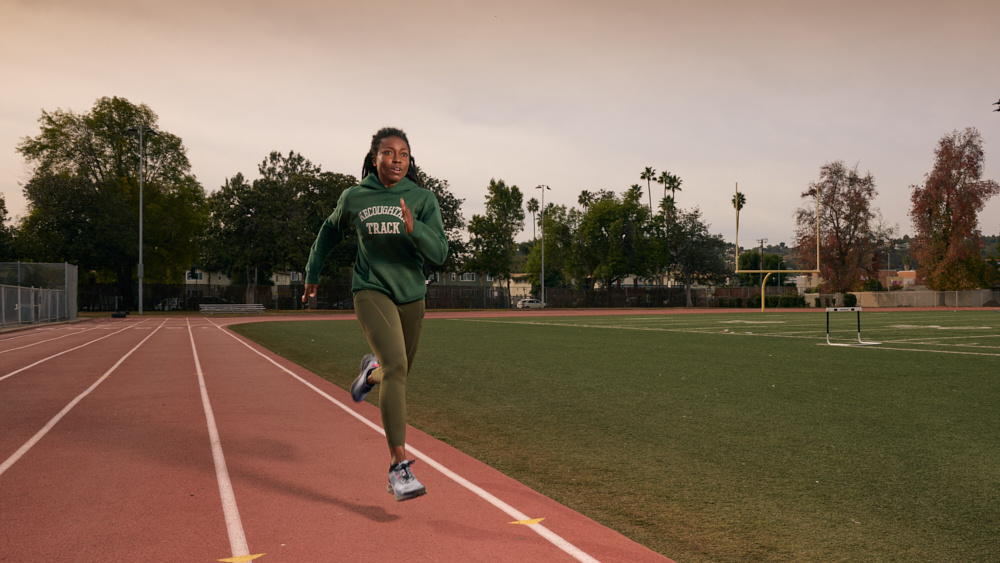
But I assumed that. So back on set, I went about testing which of the camera’s specs actually mattered to my own workflow. The autofocus was definitely something that was beneficial. The camera’s form factor was also helpful. I’ve spent so much of my career shooting with smaller bodies that now, when presented with a built-in battery grip camera, I tend to still turn my wrist vertically rather than rotating the camera to take advantage of the second grip. But I did find that the ergonomics of this camera make for a nice hold. There’s a second on/off switch on the built-in grip to keep you from accidentally triggering the shutter during traditional shooting. I did keep forgetting to turn it on when I wanted to shoot with the vertical grip, but that’s something I would easily get used to, and I did enjoy using that to capture a handful of vertical frames. something I would easily get used to and I did enjoy using that to capture a handful of vertical frames.
Even with a 24-70mm f/2.8 or 70-100mm f/2.8, the camera didn’t feel particularly heavy and was easy to handhold. The camera’s speed also makes it very easy to overshoot. Thankfully, the body has a dedicated drive mode on the upper left to allow you to switch between burst levels (high, normal, single shot, etc.). I definitely put that to use during the shoot. While doing my sprinting test, I wanted as many shots as possible. When just looking to capture a single image, I found it hard to only shoot a single frame with high-speed mode turned on (as you might imagine). So, I regularly switched into single-shot mode when I wanted to be more deliberate.
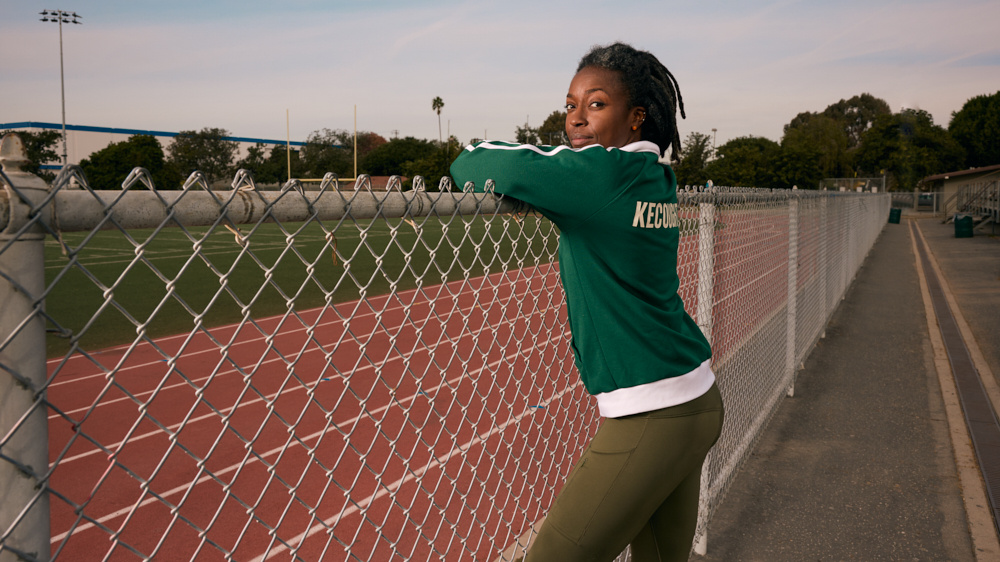
I used the electronic shutter for the entire shoot. I wanted to see the camera’s flash sync speed, as the 1/320th is an improvement over many cameras. Flash worked well with my Profoto system and delivered what I needed.
I also created a short film with the camera. I wanted to test autofocus performance in video, the 6K Canon raw video, and overall performance. I am not someone who uses slow motion a great deal, but I specifically worked that into the shot list to see how the 6K/60 fps would perform. The process was very simple, and the images looked great. As someone who is used to shooting with cinema cameras and even Canon’s own cinema hybrid, the R5C, I do wish the R1 had an option for shutter angle. It’s not the end of the world, but not having to remember to change shutter speed when changing frame rates would be a plus in the efficiency category.
And I promise I won’t go off on another tangent, but not being able to quickly switch between false color and the view assist was a real drag. We ended up getting behind schedule, and I needed to shoot at hyperspeed. Not enough time to keep going back and forth with every new setup. So, I ended up shooting without view assist the whole time so that I could more quickly access false color. I still got a sense of my framing and knew I had the exposure right at least mathematically, but I would love to more easily toggle the view assist on and off for the sake of speed. Okay, mini-rant over.
The autofocus in video was just as sticky as it was in stills. This camera also has the added function, as do all Canon cinema cameras, of being able to prioritize faces in autofocus. That means that when your subject leaves the frame, the camera doesn’t just automatically switch to the background. This can be a big plus if you are filming a scene and want the camera to only shift focus when dealing with a human subject. The camera makes for a nice compact package for capturing video in the field.
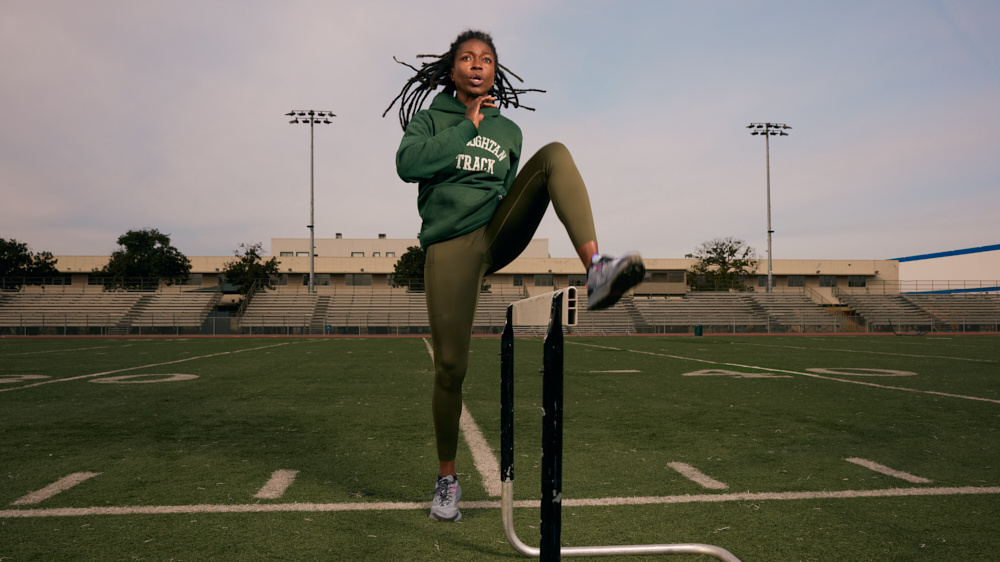
Bringing the footage into DaVinci Resolve, I found the files easy to work with and malleable. There wasn’t an excessive amount of noise in the image, except for one clip that I, for some reason, completely underexposed. But that was my problem, not the camera’s. I did find that because I relied solely on false color as opposed to previewing with live assist, most clips needed a bit of tinkering exposure-wise on my end. But with the raw video adjustments, normalizing everything was a breeze. The same goes for making some color temperature adjustments across the project and correcting any small inconsistencies on set. In fact, I made a point of really pushing the footage in Resolve to see how far I could go before it broke. Happy to report that the Canon raw video files had a great deal of creative latitude and could really stand up to a lot of alterations.
All in all, the R1 does exactly what you want it to do in the field. The autofocus in video and stills is spot-on. The body ergonomics allow for fast operation. The handful of quirks I’ve mentioned can all be solved with minor firmware tweaks. And the camera spits out a beautiful image.
Pros
- Autofocus
- Preregister specific subjects through face recognition
- Eye control autofocus
- Option to use mechanical shutter
- Sport-specific autofocus
- Uprez in-camera up to 96 MP
- Max 102,400 ISO (409,600 in H mode)
- Can record audio at max frame rates
- Physically sturdy but still feels light
- Pre-record option
- 40 fps raw stills
- Has a true 24 fps option in video
- False color
- Lots of customizable buttons
- Indicates power remaining by percentage as well as icon
- C-Log 2
- Great Canon color
- Unique design (love the pattern in the body cover)
- Larger body balances well with larger lenses
- Full-sized HDMI
- LAN connection for fast transfer of files
- Solid battery life
- Product includes a dual charger, which is a nice touch
- Multifunction hot shoe
- Can shoot stills while rolling video
- 6K/60 fps video
- Optional blackout-free shooting in stills
- 1/400th sync speed with Canon TTL flashes (1/320 otherwise)
- Great viewfinder
- In-camera LUTs
- Weather-sealing
Cons
- 24 MP resolution
- Would love a timecode port
- No waveform
- To shoot 6K, you must use raw video (no XF-AVC S option)
- No anamorphic desqueeze in-camera
- Odd False Color/View Assist workflow issue
Conclusion
I realize this is a long review, but in many ways, that’s a compliment to the R1. There’s a lot to talk about, as Canon is clearly trying to innovate in this space—especially in terms of autofocus options.
I guess the ultimate question of whether this camera is right for you is one that only you can answer. Obviously, there are two main decision points that I think will help guide your decision. First, and most obvious, this is a 24 MP camera. Is that enough for your clients or not? Because I have been shooting with 45 MP+ cameras for about a decade, I definitely noticed the difference when editing in my normal workflow. I’m a cropper. So, even on images that aren’t going to be printed on the sides of buses, I want to have the maximum number of cropping options while still maintaining resolution.
But, just as important, aside from me working with the files in post, once completed and posted online or on social media, the vast majority of the audience won’t be able to tell—or care—what the original image resolution was. Even the cropped ones. So unless you really want to blow these images up for huge prints, I don’t think the 24 MP is going to be a real issue for most photographers. Especially, again, for the photographers this camera is aimed at: photojournalists and sports/action shooters.
The second consideration, of course, is the price. The R1 currently retails for $6,299. That’s right around the range that Canon “flagship” cameras have traditionally sold for. And this is, by far, the most advanced “flagship” they’ve ever produced in terms of its capabilities. When compared to other cameras in the Canon line, like the R3 and the R5 II, the R1 is clearly the fastest. It’s also the most expensive. So what you are really paying for with the R1 is the speed and dependability. If your profession prioritizes those aspects over megapixels and your budget allows—or demands—the best, the R1 makes a lot of sense.
I’ll save comparisons of other brands’ flagships against the R1 for a future article. The short answer is that both Sony and Nikon offer flagships with 45 MP or more. But the R1 seems to have a slight edge in terms of FPS and autofocus. Sony shooters might quibble with the autofocus part (I haven’t shot with the new a1 II yet, so couldn’t say), but I will say that the R1 has the best autofocus of any camera I’ve personally ever used to this point. The Sony is slightly more expensive than the Canon. The Nikon is slightly cheaper. All have their own pros and cons, which I won’t get into here.
The Canon EOS R1 is the type of camera you already know if you need. If you need to capture action at the speed of light in absolutely any environment and turn those images around just as quickly for a news outlet or another client, the R1 makes for a terrific solution. Perhaps paired with an R5 II or another higher-megapixel Canon camera, it would make for the best 1-2 punch for a Canon shooter. The camera is a flagship at a flagship price, but it’s among the best Canon has ever offered and promises to deliver day in and day out for years to come.
